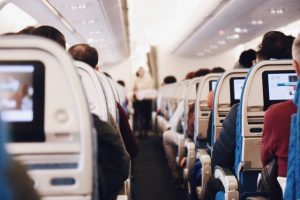 To provide a safe and comfortable flight experience for passengers, airplanes have pressurized cabins. Airplanes fly at great altitudes where the air is cooler and thinner than the air on and around the ground. With the cooler and thinner air, the atmospheric pressure drops. Therefore, airplanes are designed to pressurize their respective cabins so that passengers have a safe and comfortable experience. How does cabin pressurization work exactly?
To provide a safe and comfortable flight experience for passengers, airplanes have pressurized cabins. Airplanes fly at great altitudes where the air is cooler and thinner than the air on and around the ground. With the cooler and thinner air, the atmospheric pressure drops. Therefore, airplanes are designed to pressurize their respective cabins so that passengers have a safe and comfortable experience. How does cabin pressurization work exactly?
The Basics of Cabin Pressurization
Airplane cabins are pressurized for safety purposes. Our bodies are designed to function at a ground level. When we are exposed to air that contains less pressure than that of the ground, certain types of injuries and ailments can occur. You’ll get less oxygen, for instance, when breathing the air, and you may experience other types of bodily injuries associated with low atmospheric pressure, which are collectively known as barotrauma injuries.
With that said, too much pressure is also a concern. According to the U.S. Federal Aviation Administration (FAA), airplane cabins must be pressurized to no more than that of 8,000 feet. If the cabin is pressurized beyond 8,000 feet, other types of injuries may occur. Therefore, airplanes use a specific amount of pressure in their cabins to provide passengers with a safe and comfortable flight experience.
The Mechanics of Cabin Pressurization
Airplanes are able to achieve pressurization by pumping fresh air into the cabin while simultaneously pumping stale air out of the cabin. Airplanes have a valve near the tail. Known as an outflow valve, it releases stale air so that fresh air can enter the cabin. When the outflow valve opens, stale air will flow out of the cabin so that it can be replaced with fresh air.
The outflow valve isn’t open at all times, though. Rather, it only opens when the cabin pressure increases beyond the limit for which it’s rated. If the cabin is rated for an altitude of 8,000 feet, for instance, the outflow valve will open when the pressure exceeds 8,000 feet. Once the cabin pressure drops back to 8,000 feet, the outflow valve will close.
Not only does this setup regulate cabin pressure, it also ensures that the cabin air is fresh. Stale air in itself can cause problems. If the air inside of the cabin is never changed, passengers will be more likely to spread transmissible illnesses, such as viral and bacterial infections. With an outflow valve, airplanes can pump fresh air into the cabins.



